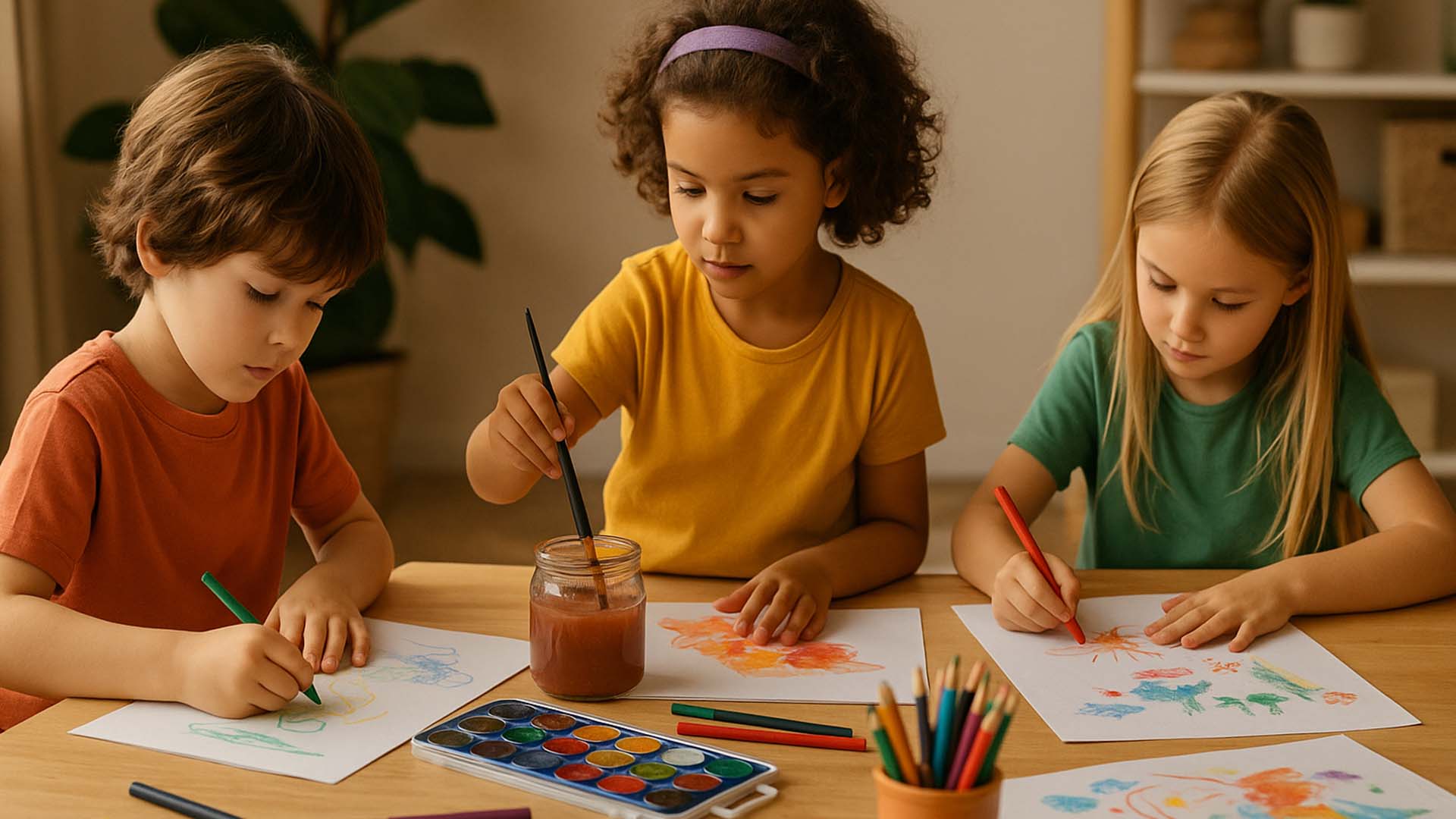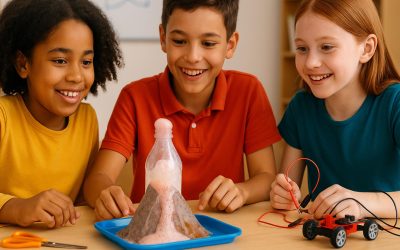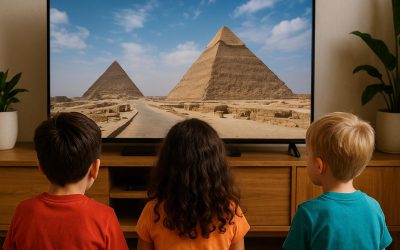Creativity is a cornerstone of a child’s holistic development, profoundly influencing their mental and emotional well-being. Far from being just a fun pastime, engaging in creative activities and exposure to cultural experiences can cultivate a range of vital skills, from cultural tolerance and historical empathy to enhanced memory and sharper critical thinking.
This article delves into the myriad ways creativity shapes young minds, offering insights into its benefits and practical tips for nurturing an innovative spirit in every child.
How Creativity Fuels Child Development
Creativity is a dynamic force that enriches every stage of a child’s learning journey. It actively supports mental growth by presenting challenges that involve concepts like equality, balance, spatial relationships, and problem-solving.
Furthermore, it significantly aids in the development of key skills such as sensory perception, verbal articulation, and hand-eye coordination; for instance, the simple act of using a paintbrush refines fine motor skills.
Creativity also fosters divergent thinking, encouraging children to reflect, wonder, and explore with boundless curiosity. It provides invaluable opportunities for experimentation, imagination, and freedom of expression, allowing children to explore their inner worlds.
Through creative play, children also develop crucial social skills by learning to consider different perspectives, understand diverse values, and empathize with the needs of others. Practical applications abound, as experimenting with new materials can introduce fundamental scientific principles, while counting pieces in a creative project can lay the groundwork for basic math concepts.
Ultimately, the positive reinforcement derived from successful creative endeavors significantly boosts a child’s self-confidence.
The Profound Benefits of Nurturing Creativity
Extensive research consistently highlights the far-reaching positive impact of creativity, extending from childhood into adulthood. Creative activities, such as drawing, have been shown to effectively reduce stress levels, offering a healthy outlet for emotional expression.
Moreover, creativity demonstrates a positive correlation with emotional intelligence in adults, underscoring its role in developing self-awareness and empathy. For children, engaging in creativity and pretend play provides a unique platform to practice original thinking, particularly when they are given the freedom for self-directed exploration.
Intriguingly, creativity is both a cause and an effect of happiness, contributing to a child’s overall well-being. It can also serve as an indicator of an individual’s openness to exploring and defining their personal identity.
Healing Through Art: Creativity in Overcoming Trauma
Creativity serves as a remarkably powerful therapeutic tool for children recovering from trauma. Activities that involve touch and movement, which form the very foundation of creative expression, possess the capacity to reshape and reorganize areas of the brain affected by traumatic experiences.
Creativity assists traumatized children in forging crucial connections between their past, present, and future, and enables them to access memories that they might struggle to express verbally or visually.
Organizations such as Art with a Heart exemplify this approach, utilizing art therapy, narrative techniques, cognitive behavioral therapy, and principles of social-emotional learning to help children process and overcome trauma through creative expression.
These structured activities are designed to foster self-awareness, empathy, and cooperative behavior, with the completed art projects serving as tangible visual records of healing and progress.
Practical Tips and Engaging Activities for Sparking Creativity
Parents, educators, and counselors all play a pivotal role in fostering a child’s creativity. Key strategies include:
- Encouraging Experimentation: Provide opportunities for children to try new things, explore different materials, and embrace the unknown without fear of failure.
- Embracing Art Without Judgment: Appreciate a child’s artistic creations for their effort and imagination, refraining from suggesting changes or imposing adult perspectives.
- Emphasizing the Process Over Product: Focus on the joy of creation and the learning that occurs during the artistic process, rather than solely on the final outcome.
- Fostering Independence: Grant children autonomy and control over their creative endeavors, allowing them to make choices and direct their own projects.
- Displaying Artwork and Stories: Showcase children’s creations prominently to validate their efforts, boost their confidence, and encourage continued creative expression.
Engaging Art Activities to Try at Home:
- Natural Arrangements: Venture outdoors to collect natural objects like pinecones, sticks, leaves, and flowers, then arrange them into unique artistic compositions.
- Sun Catchers: Create beautiful sun catchers by pressing natural materials like flowers or leaves between contact paper and hanging them near a window.
- Shaving Cream Art: Transform a cookie sheet into a canvas by spreading shaving cream, adding drops of food coloring, and swirling them to create vibrant, marbled designs.
- Printmaking with Everyday Objects: Dip sponges, bottle caps, or even vegetables into washable paint to create unique patterns and prints on paper.
- Collaborative Drawing: Engage in an interactive drawing game where participants take turns adding to a shared drawing, fostering teamwork and imaginative storytelling.
- Building with Packing Peanuts: Use slightly dampened packing peanuts to construct imaginative towers, sculptures, and other wild shapes, exploring engineering principles in a fun way.
- Coffee Filter Flowers: Create colorful, delicate flowers by applying watercolors to coffee filters and allowing them to dry, then shaping them into floral designs.
Q&A: Unlocking Your Child’s Creative Potential
Q1: Why is creativity considered as important as literacy or math?
A1: Creativity is crucial because it fosters essential 21st-century skills like innovation, problem-solving, critical thinking, and adaptability. It allows children to generate new ideas, approach challenges from different angles, and express themselves uniquely, which are vital for success in all aspects of life, just like reading and arithmetic.
Q2: How can I encourage my child’s creativity if I don’t feel creative myself?
A2: You don’t need to be an artist to foster creativity! Focus on providing opportunities and a supportive environment. Encourage free play, ask open-ended questions, celebrate their efforts (not just the outcome), and expose them to various experiences like nature, music, and stories. Your enthusiasm for their exploration is more important than your own artistic skill.
Q3: What’s the difference between structured and unstructured creative play?
A3: Structured creative play involves activities with a specific goal or set of instructions, like following a recipe for playdough or building a model from a kit. Unstructured creative play, also known as free play, allows children to explore, imagine, and create without predefined rules or outcomes, such as building a fort from blankets or drawing whatever comes to mind. Both are valuable for different aspects of creative development.
Q4: Can technology enhance a child’s creativity?
A4: Absolutely! When used thoughtfully, technology can be a powerful tool for creativity. Digital art programs, animation software, music creation apps, and even coding platforms can provide new mediums for children to express themselves and develop innovative solutions. The key is to balance screen time with hands-on activities and encourage active creation rather than passive consumption.
Sources
- Maryville University: Creativity for Kids: Benefits & Tips for Nurturing an Innovative Mind








0 Comments